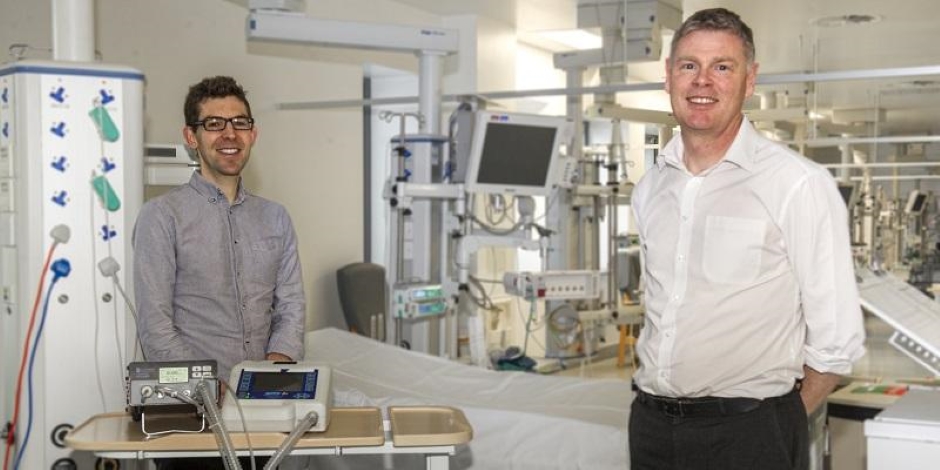
The modification to the NIPPY 3+ has come about following a collaboration between clinical staff, engineers and physicists at Leeds Teaching Hospitals Trust (LTHT) and academics and technologists at Leeds University.
MORE COVID-19 TECHNOLOGY & ENGINEERING NEWS HERE
There are an estimated 100 of the devices in Leeds hospitals and there could be many more similar devices across the NHS that could be modified to provide respiratory support to very ill patients.
Sleep apnoea stops a person breathing in their sleep and devices like NIPPY 3+ step in to ensure air supply is maintained during an episode.
The modification to is claimed to be straightforward and involves changes to the device’s settings and reconfiguring the supply of oxygen so it flows directly to the face mask worn by the patient.
The machine operates in a CPAP (constant positive airway pressure) mode, ensuring that the pressure inside the mask is slightly raised, keeping the patient’s airway open and making it easier for them to breathe. According to Leeds University, it provides enriched oxygen of between 40 to 60 per cent.
It is further claimed that because it is a modification to a device, it does not have to go through a full regulatory approval process.
In a statement, Dr David Brettle, head of the Medical Physics team at LTHT, said: "We knew there could be pressure on the NHS for more ventilators during the current coronavirus outbreak and this was a way of coming up with a potential solution. Scientists and clinicians working with academics and technicians have made it happen.”
Professor Nikil Kapur, from the School of Mechanical Engineering at Leeds University, said: "The collaboration showed how the University was able to support colleagues at LTHT who had brilliant ideas but insufficient time to investigate them because they were having to prepare their hospitals to deal with the unfolding pandemic.”
Working on a suggestion from the medical physics department at LTHT, the University team came up with a ventilator based on a conversion of a NIPPY 3+ device in four days. That working model had air and oxygen being fed into the device and then on to the patient.
It was evaluated at LTHT last week, but the medical physics team wanted to reconfigure it further, to achieve more efficient use of hospital oxygen supplies. The clinical team, with the engineers, decided that the patient’s mask would receive air from the device and oxygen directly from the hospital’s supply system.
Also, there was evidence from China that many seriously ill patients did not need full ventilation, which requires sedation, but an intermediate level of support which could be provided by a CPAP device.
Professor Kapur, said: "The decision was then to move onto the next iteration of the re-modelled device, and the changing requirements actually made those modifications easier.
Dr Pete Culmer, Associate Professor in the School of Mechanical Engineering at Leeds, added: “Previously we had been looking at having to fit each machine with seven new components – and that would have required a system to manufacture those new components.
“Instead, the solution we eventually arrived at is much simpler. You have to change some of the settings, filters and the way oxygen reaches the patient. It is now a fix that hospital teams can undertake themselves using equipment which is readily available.”





Glasgow trial explores AR cues for autonomous road safety
They've ploughed into a few vulnerable road users in the past. Making that less likely will make it spectacularly easy to stop the traffic for...